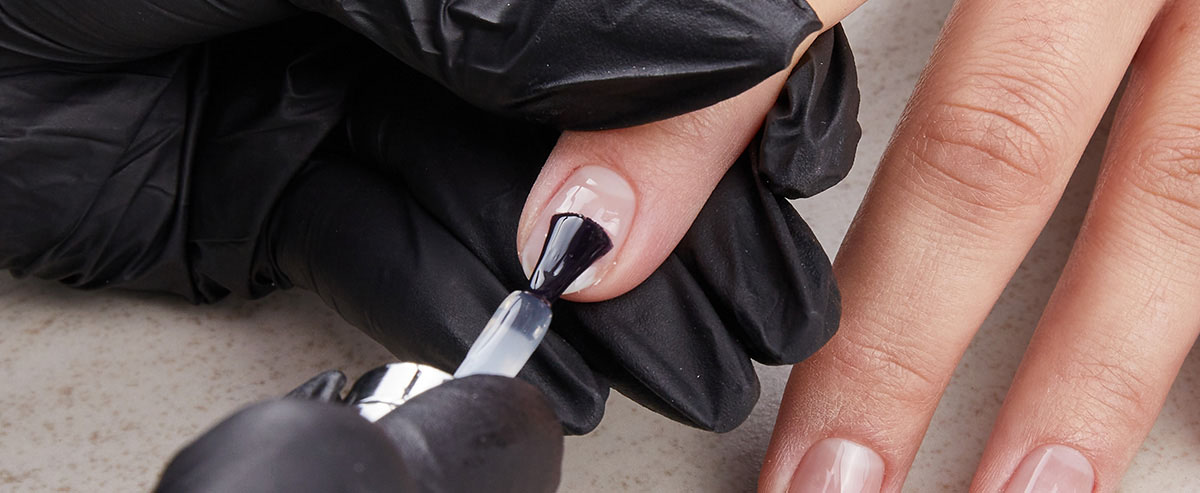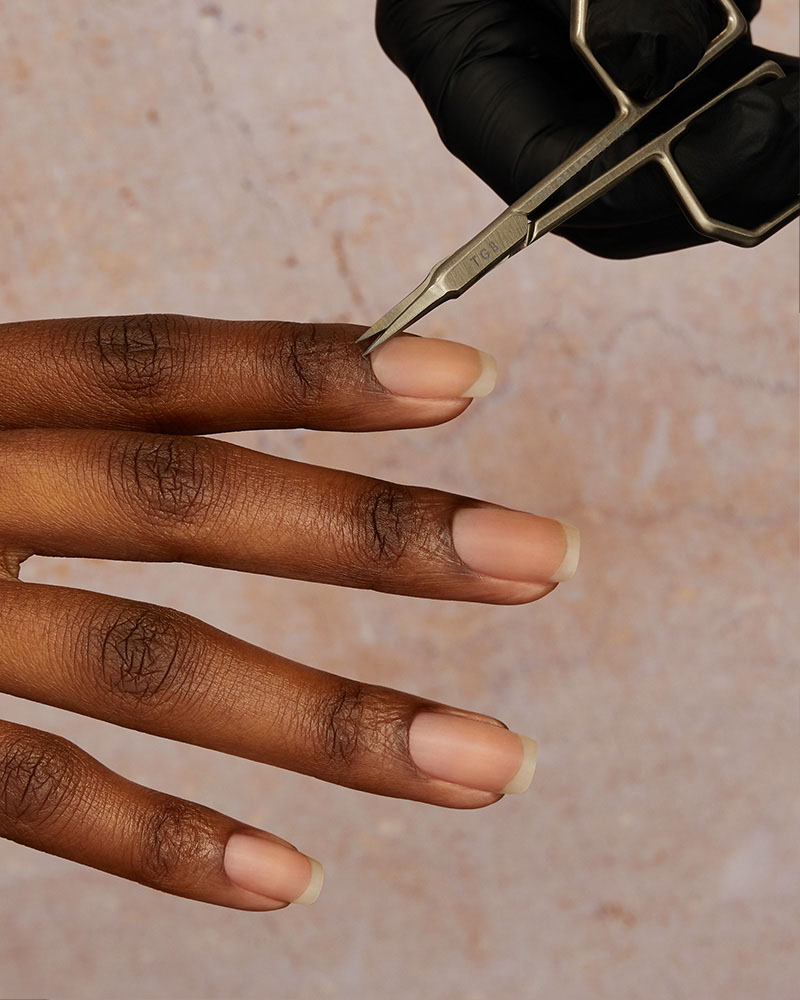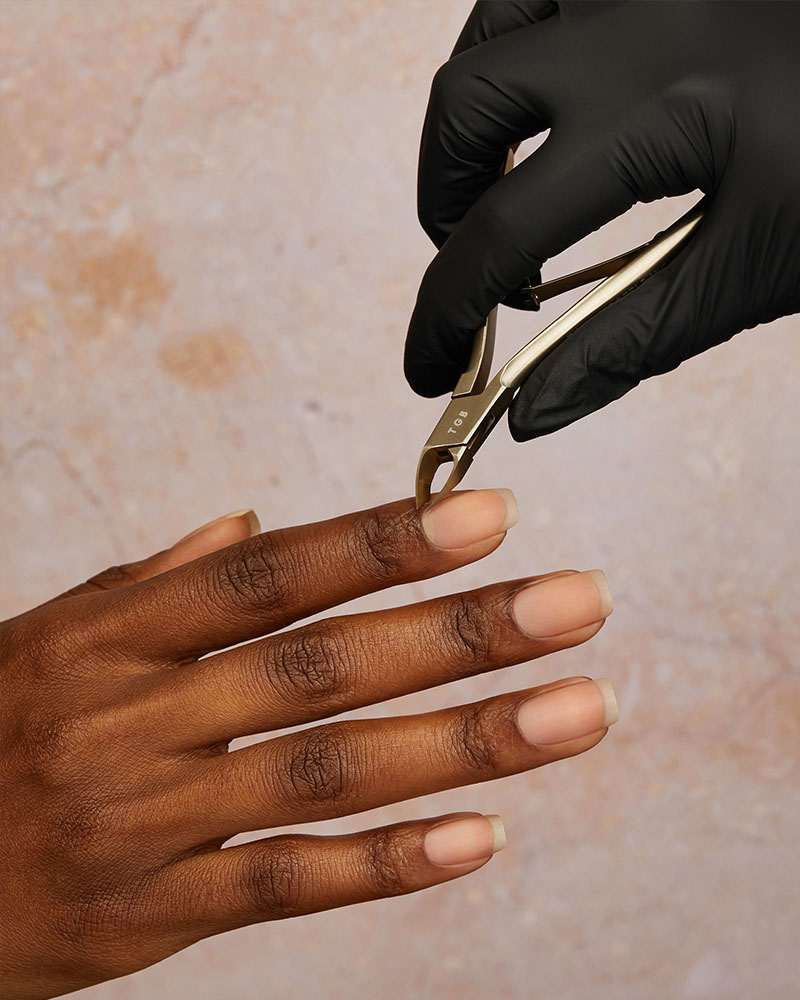How Perfect Prep Can Stop Gel Nails From Lifting
Why do my gel nails keep lifting?
We know that there’s nothing more satisfying than seeing your client walk away with a smile and their fresh set of gels. In turn, there’s nothing more upsetting than finding out the same client’s gel nails have lifted only a couple of days later. Whether it’s standard gel, BIAB™ or GelPot, you may find yourself asking ‘why do my gel nails keep lifting?’. So, today we ask the experts what causes gel nails to lift and how you can prevent it from happening in future. Spoiler alert: perfect preparation is key.
What does gel nail ‘lifting’ really mean?
The term ‘lifting’ refers to when gel polish does not bond to the nail plate correctly. This could be to do with application or preparation. A lack of adhesion means the gel does not flex with the nail, causing the gel to separate or ‘lift’. This can cause the gel to chip, peel, and generally come away from the nail. Not what you want. The place your gel nails are lifting can be a good indicator as to why this is happening in the first place.
What does it mean if my gel polish lifts at the cuticle?
Imperfect Preparation
One of the reasons gel polish lifts at the cuticles is imperfect nail preparation. So, make sure you prep their nails to perfection to avoid the risk of the gel polish lifting.
What should you do?
Let’s talk preparation. The perfect way to prepare your client’s nails is using the TGB Tools Range. Follow our simple step-by-step guide here:
Step 1 - Use the ProClip clippers to remove the length of the natural nail.
Step 2 - Use your TGB 220/240 Grit File to shape the nail.
Step 3 - Use the ProPrep, starting with the pusher end. Hold it flat against the nail to push the cuticle back.
Step 4 – Use the knife end of the ProPrep tool to remove some of the non-living tissue on the cuticle and sidewalls.
Step 5 – Use the ProTrim scissors to remove most of the non-living tissue.
Step 6 - Use the ProNip nippers to remove any remaining smaller bits of non-living tissue.
Another cause of gel nail polish lifting at the cuticle is incorrect application. If the product has been applied too close to the cuticle or the cuticle area has been flooded, the affected nail must be removed and reapplied. If a base coat is needed for the product you’re using, make sure that you’re using the correct base coat. It is also important that, if needed, the base coat should be directly under the gel application. Take care not to apply the product too close to the cuticle. We recommend always leaving a 1mm to 2mm gap between the cuticle and the start of your gel to ensure enough room to manoeuvre without affecting your results.
Impurities on the surface
Files, buffers and overall prep can leave your client’s nails covered in dead skin cells and dirt. These elements can create a barrier between the product and the nail plate, causing a breakdown in adhesions between the two. Just as DIYers recommend dusting down your walls before you paint, your nails are no different.
Complete a full removal of the affected nails. Re-prep making sure to buff the surface off the nail around the cuticle area gently ensuring to remove all dead skin cells from the nail plate and reapply the product. Our Lint Free Wipes are designed without fluff to clean surfaces as best as possible. Simply apply acetone to your Lint Free Wipe and wipe away any excess impurities on the nail surface.
Excess oil production
Excess oil production from the nail plate can be problematic — especially if your client is prone to thin and brittle nails. It can sit on the surface of the nail, reducing the adhesion of the gel, and ultimately causing the gel to lift. If your client suffers from increased oil production in the skin or hair cells, they will likely also suffer from increased oil in the nail. Oils produced by the nail bed push up through the nail surface structure. The same applies to those with thin or weakened nail plates or those with a prominently visible lunula.
What should you do?
Complete a full removal of the affected nails, re-prep and dehydrate the nail surface and repeat product application. Make sure to use a Lint Free Wipe soaked in acetone to remove any excess oil on the nail surface when prepping your client's nails. When repeating the product application, this time try adding a layer of Clear Rubber Base rather than the 2-in-1. You should do this before your BIAB™ application even if the BIAB™ does not require it. This can help to combat extra oils and stop the breakdown of the product. Our Rubber Base is designed for thin nails, offering a strong base coat to give the nail the extra protection it needs.
What if my gel polish lifts at the free edge?
You may have noticed your gel polish lifting at the free edge, otherwise known as the nail tip. Let’s explore the reasons why your gel may be lifting at the free edge.
General wear and tear
Nothing lasts forever, even your gel nails. You should expect to see general wear and tear for gel nails around two weeks after application, depending on the client and their daily routine. For instance, if your client’s nails are frequently exposed to harsh chemicals, the gel is likely to lift, chip or peel more quickly. Pressure at the free edge can cause the free edge to wear down, including the product that is capping that edge. It can also cause the nails to weaken and pull away from the nail plate.
What should you do?
Complete a full removal of the affected nails and re-prep the nail using the TGB Tools Range. If your client is a frequent sufferer of lifting from the free edge we suggest using a stronger base coat such as a rubber base or BIAB™. You should concentrate on sealing the free edges properly upon application. You should also talk to your client to get more of an understanding of what their day-to-day life looks like. Heavy-handed clients would benefit from a layer of 2-in-1 or Rubber Base prior to their colour to combat colour chipping. Let the client know that you also advise more regular appointments to ensure the nail is kept in the best condition.
Inadequate aftercare
Following the correct aftercare procedure is fundamental to restoring and maintaining nail health. Dehydrated nails tend to be weak, brittle and prone to splitting, which makes the surface of the nail more difficult to bond to, ultimately causing the gel to lift after application.
What should you do?
Nails rely on hydration to stay healthy so it is important that you apply our luxurious Cuticle Essence before your client leaves. This ultra-nourishing oil is the perfect finishing touch to a new manicure and increasing the chance of the gel nails lasting.
Cuticle Oil helps to feed the nails with all the vitamins they need to be restored and revitalised. Contrary to popular belief, Cuticle Oil does not cause gel nails to lift if applied as directed after gels have been cured. Dehydrated nails tend to curve away from the product at the free edge which can lead to lifting. This means that regular oil application is important for keeping the nails healthy and preventing lifting.
‘Goldilocks’ layers
Like the popular fairytale, it’s important to get the thickness of your gel application ‘just right’. Too thick, and your gels are unlikely to cure properly. This can leave them gloopy, prone to damage and likely to lift. Too thin, and your gels are likely to have an uneven foundation, increasing the likelihood of chips and lifting.
What should you do?
Always follow the correct application methods provided by different brands for specific products to ensure that you use the correct amount of product and curing effectively. Just the right amount of gel can help your gel to cure evenly for a longer-lasting result. To increase the likelihood of your gel curing correctly, it’s important to use a Nail Lamp from the same brand as your gel polish. This will help to give your manicure full compatibility and functionality.
What should you say to your clients if their gel nails lift?
If your client raises a complaint about their gel nails lifting, consider resolving the issue as soon as you can. It’s important to let the client know that they should not attempt to pick, peel, or remove the gel on their own as this can cause irreversible damage to the nail plate.
Premium products for picture-perfect results
As the home of professional nail products, it’s our mission to provide you with everything you need for outstanding results every time. This extends into our TGB Academy, with a range of nail technician courses to expand your knowledge of gel, BIAB™ and other popular nail treatments.
Find more tips, tricks and inspiration on our TGB Blog.
Not a nail tech? Not a problem! Share this post with your nail technician and feel inspired by all-things metallic nails.









